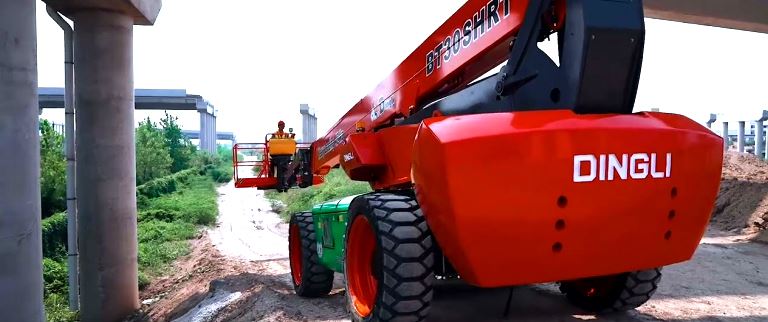September 09,2024
8 Costly Mistakes to Avoid When Renting Work-at-Height Equipment

Ensuring safety and efficiency is critical across various industries that require work at heights, from construction to maintenance, warehousing, and beyond. However, many companies and contractors 6make costly mistakes when hiring work-at-height equipment. These errors not only drive up operational costs but also pose serious safety risks. In this blog, we’ll highlight nine common mistakes to avoid when renting work-at-height equipment, ensuring your operations run smoothly and safely.
1. Overlooking Safety Standards
One of the most dangerous mistakes is overlooking safety standards. Always ensure that the equipment you hire complies with all safety certifications and regulations.
• Ensure equipment is certified: Look for relevant certifications such as CE, OSHA, or ISO.
• Check for safety features: Guardrails, harness attachments, and other safety features should be in place.
• Prioritize safety over cost: It may cost more, but certified and safer equipment prevents accidents.
2. Selecting the Wrong Type of Equipment
Each job requires specific equipment, and choosing the wrong type can lead to inefficiencies and potential safety risks.
• Assess job requirements: Understand the height, weight, and type of work involved.
• Site conditions: Evaluate the terrain and space constraints before selecting the equipment.
• Consult with experts: If unsure, consult with professionals who can recommend the right tools for the job.
3. Neglecting Equipment Condition and Maintenance
Hiring poorly maintained equipment can result in breakdowns or accidents, which can delay your project and lead to unnecessary costs.
• Request maintenance records: Always ask for the latest service and maintenance logs.
• Inspect the equipment: Physically inspect the equipment before signing the rental agreement.
• Schedule preventive maintenance: Ensure the equipment is maintained regularly during the rental period.
4. Not Considering Operator Training
No matter how advanced the equipment is, improper handling can lead to accidents. Ensuring that operators are trained to handle the equipment is crucial.
• Verify operator certifications: Ensure your operators are certified to handle the equipment.
• Offer in-house training: Provide refresher courses or on-site training.
• Hire trained operators if needed: If your team lacks the expertise, consider hiring trained operators along with the equipment.
5. Ignoring Load Capacity
Overloading work at height equipment can result in serious accidents, putting your workers and project at risk.
• Check load capacity ratings: Always verify the equipment's maximum load capacity.
• Consider additional weight: Factor in the weight of tools, materials, and other items on the platform.
• Don't compromise safety for convenience: Avoid using equipment not designed for the intended load, even if it's more convenient.
6. Focusing Solely on Cost
While it's tempting to opt for the lowest cost, focusing solely on cost often results in needs to be updated, safe, or equipment efficient.
• Look at value, not just price: Consider the condition, features, and safety standards rather than just the price.
• Weigh quality against cost: Spending a little more upfront can save you from expensive breakdowns or accidents later.
• Evaluate total cost of ownership: Consider all costs, including potential downtime or repairs, when choosing equipment.
7. Failing to Evaluate the Rental Supplier
Not all equipment rental companies are created equal. It is important to choose a supplier with a good reputation, reliable equipment, and excellent customer support.
• Research suppliers: Check reviews, ask for recommendations, and investigate the company's track record.
• Check for industry experience: Choose suppliers who specialize in work at height equipment.
• Look for after-sales service: Ensure they offer reliable support in case of issues or breakdowns during the rental period.
8. Neglecting Site-Specific Requirements
Every work site is unique, and failing to consider factors like terrain, weather, and access can lead to hiring unsuitable equipment.
• Assess site conditions: Is the site flat or uneven? Is there enough space for larger equipment?
• Check weather conditions: Wind speed, rain, and other weather factors can affect the type of equipment needed.
• Ensure easy access: Ensure the equipment can be delivered and manoeuvre quickly on-site.
Conclusion
Renting work-at-height equipment is essential for industries like construction, manufacturing, and maintenance, but costly mistakes can occur if you're not vigilant. Avoiding these common pitfalls ensures your operations remain safe, efficient, and on schedule. Always prioritize safety standards, select the right equipment for the job, and partner with reliable suppliers. Taking these steps will not only streamline your project but also save you time, money, and unnecessary complications in the long term.